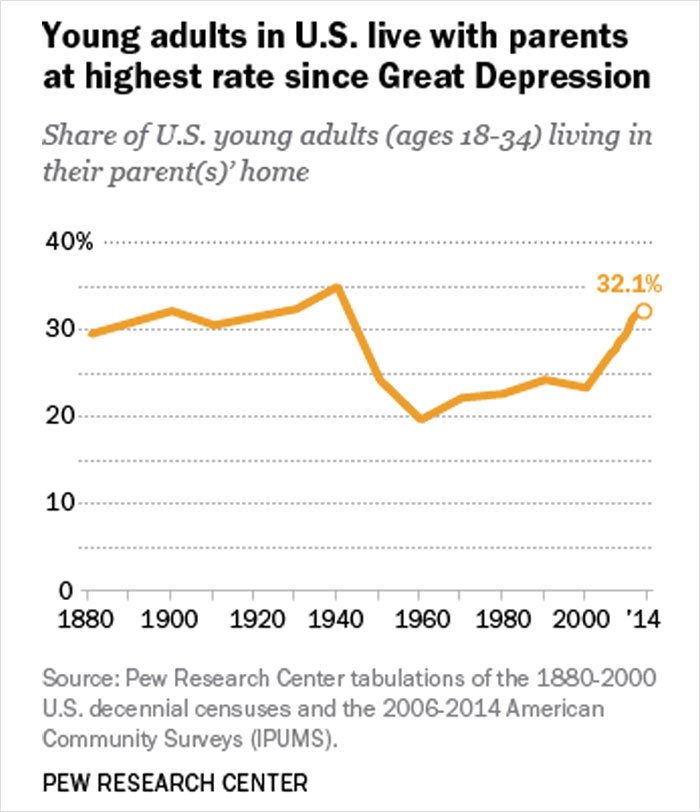When Do Most People Move Out? Average Age Revealed
The journey to independence is a significant milestone in a person’s life. Moving out of the family home is often seen as a rite of passage, marking the transition from adolescence to adulthood. This article explores when do most people move out of the family home, the historical and cultural trends, and the economic and social dynamics at play.
The Historical Significance of Moving Out
Moving out represents more than just a change of address; it signifies personal growth, the assumption of new responsibilities, and the beginning of a self-directed life. It’s a critical step in developing independence and self-sufficiency. Understanding when most people take this step provides insights into societal norms and economic realities.
Historical Trends in Moving Out Ages
According to urban.org, the average age young adults moved out of their parents’ homes between 2010 and 2021 was around 26–27 years old. This is logical because it’s after many people have finished college and around the time when most people get married or are in a long-term relationship.
Cultural and Societal Influences on Moving Out
Cultural expectations and societal norms play a significant role in determining when individuals move out. In some cultures, staying with family until marriage is the norm, while in others, early independence is encouraged.
These cultural differences shape the experiences and expectations of young adults as they transition to independent living.
Economic Factors Impacting the Average Age
A 2024 Harris Poll for Bloomberg found that about 45% of people ages 18–29 are living at home with their families, which is the highest figure since the 1940s. The cost of living may be a factor in this, causing some people to move back in.
Economic stability is a crucial factor in the decision to move out. High living costs, stagnant wages, and economic uncertainty can delay the move. Many young adults are forced to balance student debt repayment with saving for rent or a mortgage, making it financially prudent to stay with parents longer.
The Influence of Job Markets and Education Costs
The job market and education costs are closely linked to the age of moving out. A competitive job market can mean longer job searches and delayed financial independence.
Additionally, the rising cost of education and the burden of student loans often require young adults to stay at home longer to manage their finances effectively.
Regional Differences in Moving Out Ages
Geographic location plays a significant role in the average age of moving out. Urban areas, with their higher living costs and competitive job markets, often see older move-out ages. In contrast, rural areas, where housing is cheaper and jobs might be more accessible, may see younger move-out ages.
The Impact of the COVID-19 Pandemic on Moving Out Ages
The COVID-19 pandemic has had a profound effect on moving out ages. Economic uncertainty, job losses, and the shift to remote work and education have led many young adults to stay with their parents longer. The long-term impacts of these changes are still unfolding.
The Psychological and Social Aspects of Moving Out
Moving out is not just a financial decision; it also involves psychological readiness and social factors. The desire for independence, peer influence, and personal aspirations play significant roles. Successfully managing this transition requires emotional maturity and social support.
The process of moving out fosters personal growth and responsibility. Young adults learn to manage their finances, household chores, and personal schedules. This newfound independence is crucial for developing life skills and confidence, preparing them for future challenges.
Comparing Genders: Do Men and Women Move Out at Different Ages?
Gender can influence the age at which individuals move out. Historically, men and women have faced different societal expectations and economic opportunities, affecting their move-out timelines. Today, these differences are narrowing, but some disparities still exist.
Recent Changes and Future Predictions
Recent trends indicate a continued increase in the average move-out age. Economic challenges, housing market fluctuations, and evolving social norms will likely influence future patterns. Predicting these trends helps stakeholders prepare for the changing landscape.

Advice for Those Preparing to Move Out
For those planning to move out, preparation is key. Financial planning, understanding housing markets, and developing essential life skills are crucial steps. Seeking advice from experts and those who have successfully made the transition can provide valuable insights.
What’s a Parent to Do?
As a parent of an adult child who may still be living at home, understanding the myriad factors influencing this situation can offer reassurance and perspective. Economic challenges, the pursuit of higher education, and societal shifts all play significant roles in delaying the move-out age. It’s important to recognize that your support and understanding are invaluable during this transitional period.
Your role as a parent continues to be crucial as your child navigates the complexities of achieving independence. Open communication, setting mutual expectations, and providing guidance can help ease the process. Remember that this extended time at home can strengthen your relationship and provide your child with a stable foundation as they prepare for their next steps.
Rest assured, this phase is temporary, and with your support, your child will gain the confidence and resources needed to thrive independently. You will both get through this situation, emerging stronger and more resilient. Embrace this time as an opportunity for growth and connection, knowing that your efforts are paving the way for your child’s future success.


